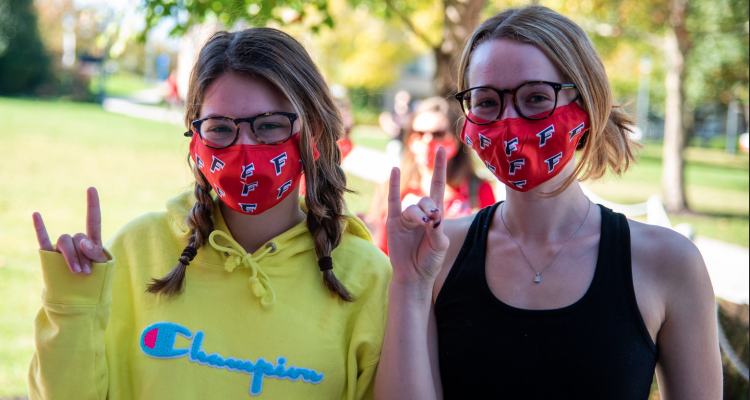On Monday Feb. 14, an email was sent out from Fairfield University’s Office of the President whose contents have prompted widespread discourse amongst Fairfield’s student body. The email, striking some as controversial, outlined some major modifications to the University’s COVID-19 mitigation strategies. There are five main modifications, though one in particular stands out—see if you can guess which one. Let’s quickly break the email down:
One: The University will be shifting from an indoor mask mandate to an indoor mask recommendation. This may be subject to change depending on specific classroom settings or events.
Two: The University will continue its recommendation of vaccines and booster shots.
Three: The University will continue regular testing for unvaccinated students as well as keeping rooms prepared for those who need to be isolated.
Four: The University will be reopening its gates to the public, including no restrictions for public or campus gatherings.
Five: COVID-19 updates will be sent out to faculty, staff and students when relevant information arises.
Could you guess which one got people talking? If you said the first one, you’d be absolutely correct.
For anybody familiar with Fairfield University’s COVID-19 protocol up to this point, this would be an easy guess. A whole two years after the Covid-era started, indoor mask mandates are being greatly loosened.
To some, this new rule stating that masks are only recommended comes as a breath of fresh air, literally and metaphorically. To others, this modification is seen as a completely unnecessary risk.
In my view, it may very well be too early for the University to be taking such a major step, as it now lands the student body and faculty in territory that is still shrouded in mystery.
As demonstrated by the recent highly contagious Omicron variant, COVID-19 can change nearly overnight. Especially now, it’s hard to understand the sudden rush to move away from indoor mask mandates.
I understand just as much as my next peer how completely restrictive masks have been for the past couple of years. At times they’re hot, itchy and can make waving to the wrong person a bit awkward.
It’d be wonderful to rid ourselves of this light blue face clinger for good, but I’m concerned the University made this call a bit preemptively.
One concern of mine is if another variant comes out that would, most likely, require masks again. Not only would there be another surge of COVID-19 cases among the student body, but getting students to wear masks again may in itself be a difficult task.
Another concern of mine is for the University faculty and staff. Plenty of these individuals are at-risk, whether that is due to matters of personal health or because they are of older age. Though wearing a mask may not be as necessary for a student that is young and healthy, transmitting the virus to somebody at risk could make a world of difference to them.
Fairfield University should be treated as the community it is, and considering the needs of everyone is a component of that. Comfort for some should not come as a potential health risk for others.
To quote the email that was sent out, “Over the last two years the University has made extraordinary efforts to mitigate the effects of COVID-19…” Though wearing a piece of cloth over your face indoors does not take an “extraordinary effort”, it could very well make an extraordinary difference to some of the University’s students, faculty, and staff.
Having to collectively deal with COVID-19 for the past two years has been an incredibly tiring task. This said, drawing a finish line and stepping over it does not excuse ourselves—it does not mean we are done yet. The potential risks that could come about from these Covid protocol modifications do not outweigh the benefits, at least not at this moment in time.
I wholeheartedly believe that, together, we can get “back to normal”—but getting there just might require taking precautions for just a bit longer.


Leave a Reply